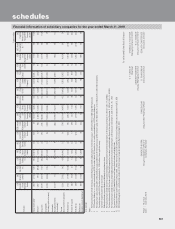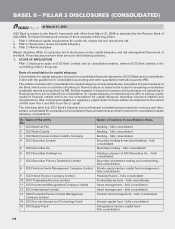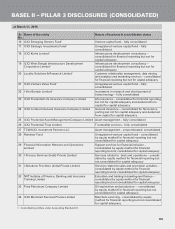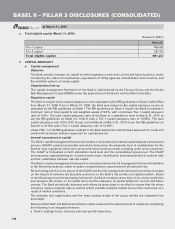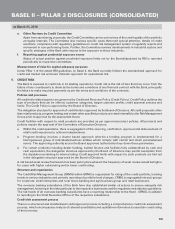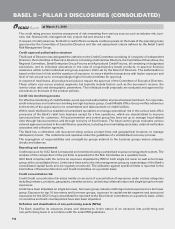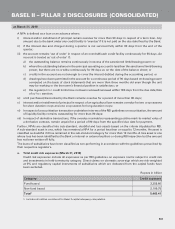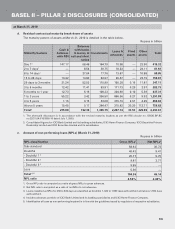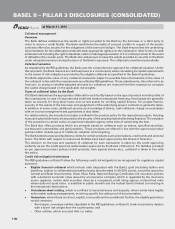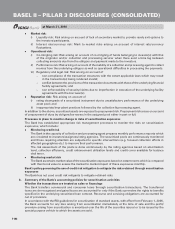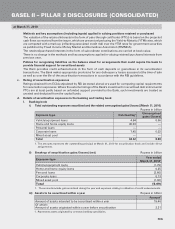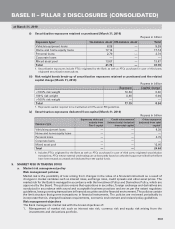ICICI Bank 2010 Annual Report Download - page 177
Download and view the complete annual report
Please find page 177 of the 2010 ICICI Bank annual report below. You can navigate through the pages in the report by either clicking on the pages listed below, or by using the keyword search tool below to find specific information within the annual report.
F97
A NPA is defined as a loan or an advance where:
i) interest and/or installment of principal remain overdue for more than 90 days in respect of a term loan. Any
amount due to the bank under any credit facility is ‘overdue’ if it is not paid on the due date fixed by the Bank;
ii) if the interest due and charged during a quarter is not serviced fully within 90 days from the end of the
quarter;
iii) the account remains ‘out of order’ in respect of an overdraft/cash credit facility continuously for 90 days. An
account is treated as ‘out of order’ if:
a) the outstanding balance remains continuously in excess of the sanctioned limit/drawing power; or
b) where the outstanding balance in the principal operating account is less than the sanctioned limit/drawing
power, but there are no credits continuously for 90 days as on the date of the balance sheet; or
c) credits in the account are not enough to cover the interest debited during the accounting period; or
d) drawings have been permitted in the account for a continuous period of 90 days based on drawing power
computed on the basis of stock statements that are more than three months old even though the unit
may be working or the borrower’s financial position is satisfactory; or
e) the regular/ad hoc credit limits have not been reviewed/renewed within 180 days from the due date/date
of ad hoc sanction.
iv) a bill purchased/discounted by the Bank remains overdue for a period of more than 90 days;
v) interest and/or installment of principal in respect of an agricultural loan remains overdue for two crop seasons
for short duration crops and one crop season for long duration crops;
vi) In respect of a securitisation transaction undertaken in terms of the RBI guidelines on securitisation, the amount
of liquidity facility remains outstanding for more than 90 days;
vii) In respect of derivative transactions, if the overdue receivables representing positive mark-to-market value of
a derivative contract, remain unpaid for a period of 90 days from the specified due date for payment.
Further, NPAs are classified into sub-standard, doubtful and loss assets based on the criteria stipulated by RBI.
A sub-standard asset is one, which has remained a NPA for a period less than or equal to 12 months. An asset is
classified as doubtful if it has remained in the sub-standard category for more than 12 months. A loss asset is one
where loss has been identified by the Bank or internal or external auditors or during RBI inspection but the amount
has not been written off fully.
The loans of subsidiaries have been classified as non-performing in accordance with the guidelines prescribed by
their respective regulators.
a. Total credit risk exposures (March 31, 2010)
Credit risk exposures include all exposures as per RBI guidelines on exposure norms subject to credit risk
and investments in held-to-maturity category. Direct claims on domestic sovereign which are risk-weighted
at 0% and regulatory capital instruments of subsidiaries which are deducted from the capital funds have
been excluded.
Rupees in billion
Category Credit exposure
Fund-based 3,355.66
Non-fund based 2,109.75
Total1 5,465.41
1. Includes all entities considered for Basel II capital adequacy computation.
BASEL II – PILLAR 3 DISCLOSURES (CONSOLIDATED)
at March 31, 2010


